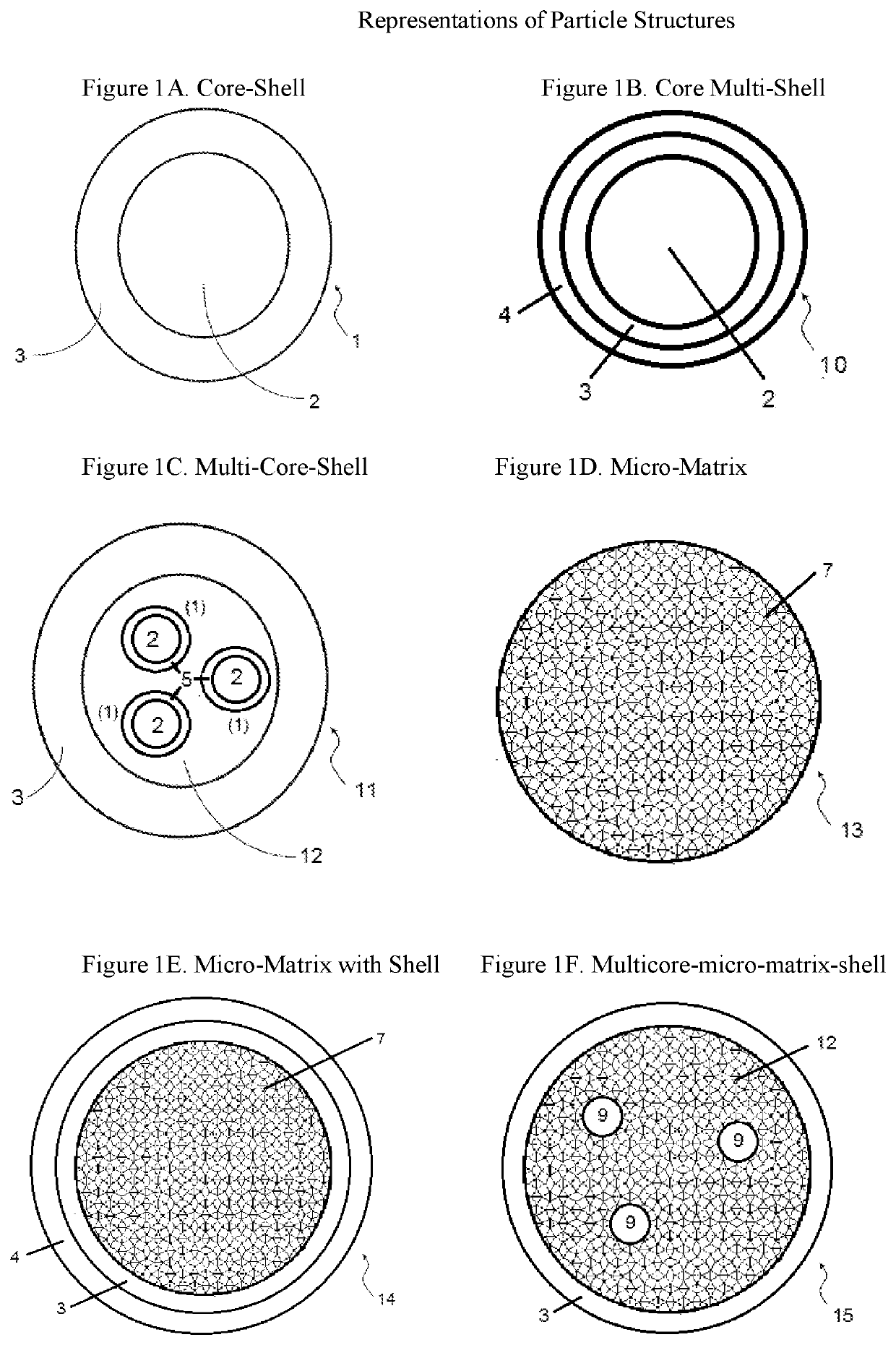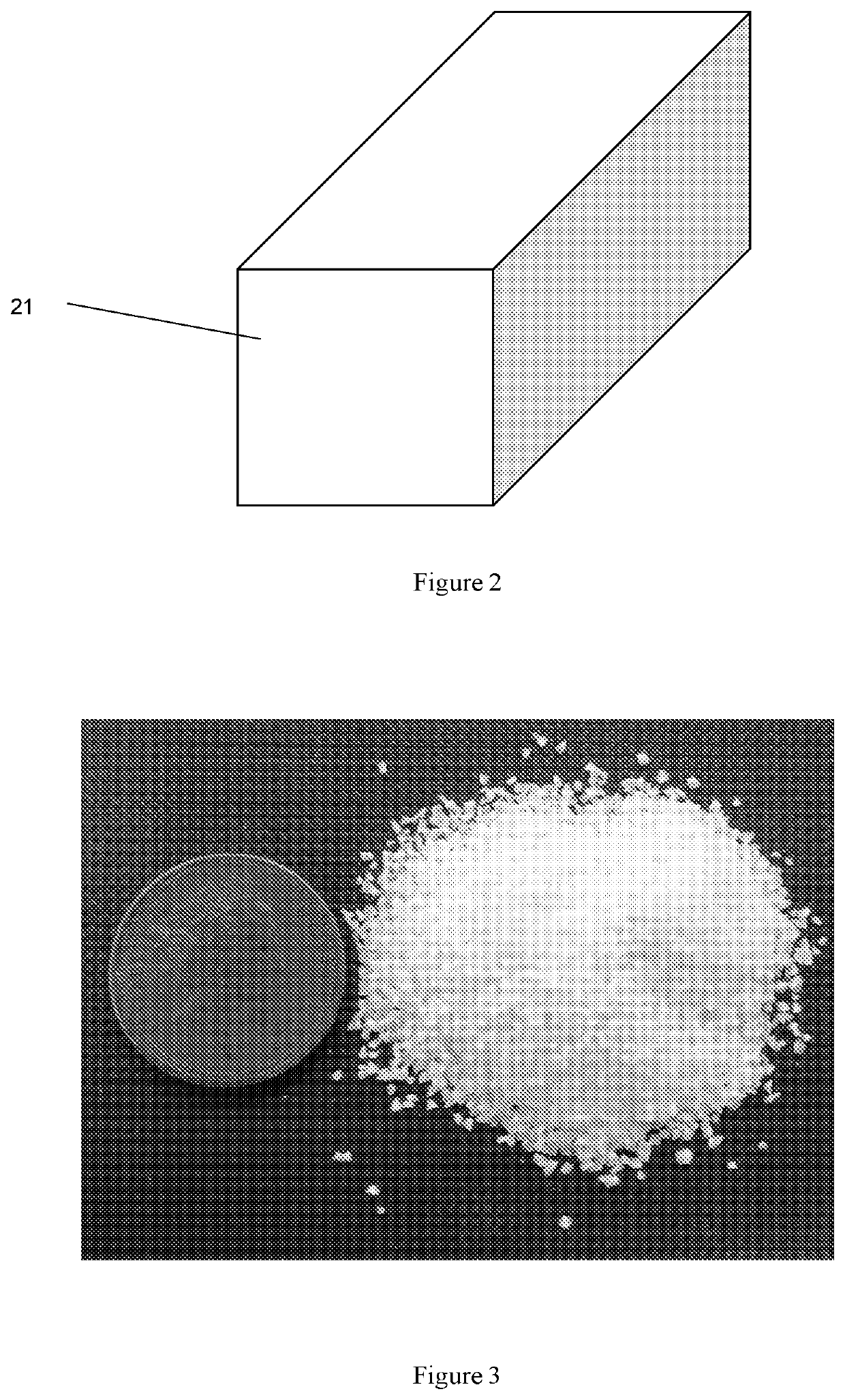Oil field chemical-carrying material and process for making the same
- Summary
- Abstract
- Description
- Claims
- Application Information
AI Technical Summary
Benefits of technology
Problems solved by technology
Method used
Image
Examples
example fabrication
Method
[0113]Fabrication is via a process with two principal stages. First, a precursor formation is fabricated in that the oil field chemical is introduced to a formable matrix material comprising a suitable polymeric or pre-polymeric matrix material in a liquid state to form a suitable distribution for example as a dispersion therein and this is then solidified to produce a precursor formation with the oil field chemical distributed as a discontinuous distribution within a continuous solid matrix phase of polymeric material. Second, the resultant precursor formation is milled to a suitable particle size.
[0114]As will be appreciated, this is by way of example only. In particular the use of a liquid polymeric or pre-polymeric matrix material is merely one way of producing the desired distribution of oil field chemical in the precursor formation and milling is merely one way of producing particles therefrom.
[0115]FIGS. 1 to 3 illustrate an example process schematically.
[0116]The oil f...
example formulations
Example 1—Preparation of a Solid Water Tracer / Polymer Granulated Material by Casting and Milling
[0140]A tracer (a sodium salt of benzoic acid, in the form of a powder) was sieved through a 450 μm sieve. 10 g of tracer was mixed with 75 g of epoxy resin (bisphenol-A-(epichlorohydrin)) to form a dispersion of solid in liquid prepolymer mixture. 15 g of epoxy hardener (triethylenetetramine) was added to the mixture, and mixed until fully dispersed. The liquid mixture was cast into a mould and cured in an oven at temperature (60° C.), before curing into a solid article (solid bar, dimensions, 7 mm×15 mm×450 mm). After 1 hour, the solid article was removed from the oven and de-moulded, before being left to cool to room temperature. The solid article was processed through a cutting mill, containing a sieve cassette, to produce a granulated product at a particle size between 850 to 100 microns.
example 2
on of a Solid Water Tracer / Polymer / Reactive Diluent Granulated Material by Casting and Milling
[0141]A tracer (a sodium salt of benzoic acid, in the form of a powder) was sieved through a 450 μm sieve. 1.0 Kg of tracer was mixed with 7.33 Kg of epoxy resin (bisphenol-A-(epichlorohydrin)) and 0.2 Kg of reactive diluents to form a dispersion of solid in liquid prepolymer mixture. 1.47 g of epoxy hardener (triethylenetetramine) was added to the mixture, and mixed until fully dispersed. The liquid mixture was cast into a mould and cured in an oven at temperature (60° C.), before curing into a solid article (solid bar, dimensions, 7 mm×15 mm×450 mm). After 1 hour, the solid article was removed from the oven and de-moulded, before being left to cool to room temperature. The solid article was processed through a cutting mill, containing a sieve cassette, to produce a granulated product at a particle size between 850 to 100 microns.
PUM
| Property | Measurement | Unit |
|---|---|---|
| Length | aaaaa | aaaaa |
| Flow rate | aaaaa | aaaaa |
| Size | aaaaa | aaaaa |
Abstract
Description
Claims
Application Information
 Login to View More
Login to View More - R&D
- Intellectual Property
- Life Sciences
- Materials
- Tech Scout
- Unparalleled Data Quality
- Higher Quality Content
- 60% Fewer Hallucinations
Browse by: Latest US Patents, China's latest patents, Technical Efficacy Thesaurus, Application Domain, Technology Topic, Popular Technical Reports.
© 2025 PatSnap. All rights reserved.Legal|Privacy policy|Modern Slavery Act Transparency Statement|Sitemap|About US| Contact US: help@patsnap.com


